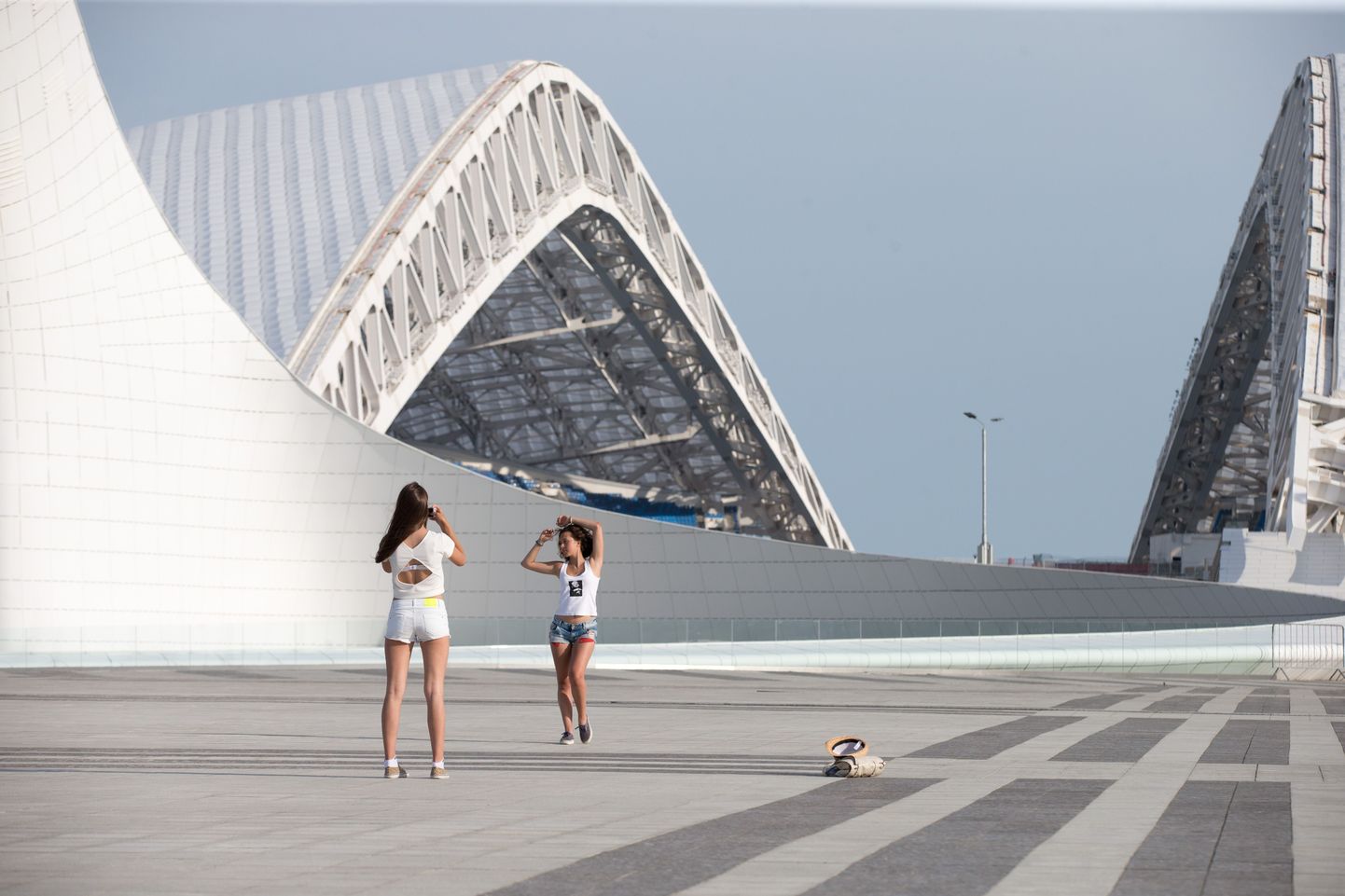
Serene and spacious, the village of Krasnaya Polyana or Punase Lageda*, with over 130 years under its belt, has entered it new Post Sochi Olympics Era: no longer Esto-Sadok or Eesti Aiake*, welcome to a mountainous suburb of Sochi.

Serene and spacious, the village of Krasnaya Polyana or Punase Lageda*, with over 130 years under its belt, has entered it new Post Sochi Olympics Era: no longer Esto-Sadok or Eesti Aiake*, welcome to a mountainous suburb of Sochi.
So here we are, riding to the village in Caucasus on board of the electric train symbolically for Estonia named Sparrow (Lastochka), after our national bird. Getting off at Esto-Sadok train stop, we proceed to walk along Estonskaya Street, take a turn to Pereselencheskaya St and step through courtyards into Gorki Olympic village which was erected unto the Mzymta River meadow, right in front of the Estonian village at 540 metres from sea level.
Locating the locals in Eesti Aiake is no easy business – whoever one meets says he is almost a local, meaning he settled here during the grandiose Olympic constructions. The one-time builders have turned into businessmen, security guys, bus drivers and taxi drivers.
At the mountain resort, the season is off at the moment, so Punase Lageda meets us with the sound of silence.
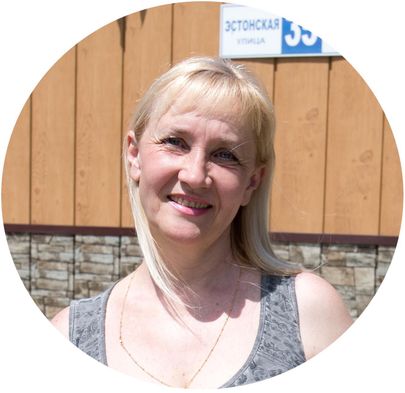
In a shady yard at Estonskaya St, there stands a modest cabin over a hundred years old. Once upon a time, it was here that the classic Estonian writer Anton Hansen Tammsaare stayed while treating his lungs in Caucasus. Now, the house houses a museum. Here to meet us, is the museum’s director Dianna Gubareva, a Russian Estonian of the fifth generation, keeping the Estonian flame alive in Sochi mountains for some two decades.
A while ago, Ms Gubareva up and counted Estonian families at Punase Lageda: «In Eesti Aiake, about 20 families remain bearing an Estonian name. Back in 1883, 36 families made their way here; it took them twelve years to reach that far. In those that remain, Estonian is no longer spoken. The language was preserved as long as the grandmothers and grandfathers were still alive – at home, Estonian was always spoken when conversing with them. But we haven’t had old folks like that for a couple of decades now.»
Village turned town
The Estonian village, right smack in the centre of Punase Lageda, is thickly surrounded by Olympic structures and facilities. The crown jewel is the ski lift leading up to the highest peak in Punase Lageda – Roza Hutor – where an Estonian family Roosa once settled down to dwell.
Looking at the countless houses, hotels and sports facilities, one would never know that decades ago Roza Hutor was a place totally empty. Till today, however, the lone hikers recall the mountain’s forsaken gardens and a hunter’s hut.

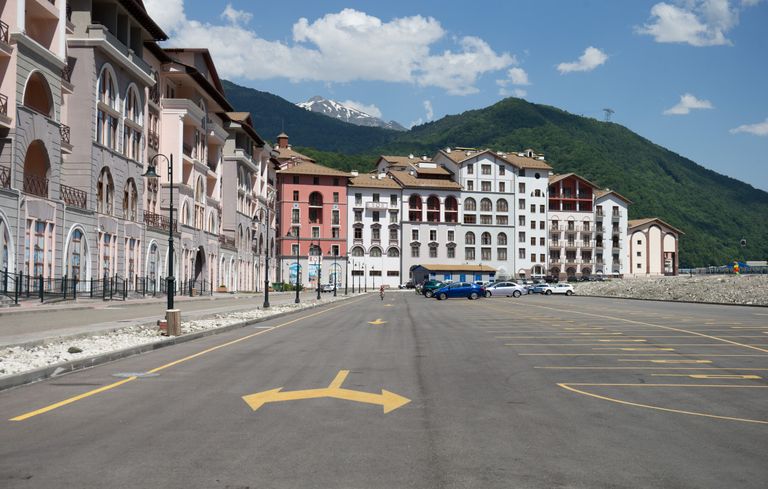
To the other side of central Eesti Aiake, there stands the Olympic complex Laura built by Gazprom. This is a former oil shale plant location, where Estonian settlers’ descendants also used to dwell. By the time Olympics came to town, the area was almost uninhabited – the one and only Estonian family still living in the Gazprom construction site was moved into a new house next to Tammsaare Museum.
The «almost locals» we met told us that some local Estonians thought it better to earn from the Olympic construction boom and eagerly sold their abodes in the mountains, swapping it for a flat in Adler or the flatland part of Sochi.
«By its victories, the Russian Olympic team justified all that was built here,» confidently announces the Caucasian Estonian Dianna Gubareva. «While the construction was going on, my heart was aching for the nature, but a year after the games everything started to turn green again. The plants around here grow fast as anything, and swiftly fill up whatever is left empty. Euro and dollar have indeed become more expensive, but nevertheless travel to the sea, especially now that the infrastructure is fully completed.»
The opinions vary, however, as we turn aside from Estonskaya Street. «The place is growing, little by little village life gives way to city life, the children get more options for sports and entertainment,» says Alyona, a damsel dwelling at Pereselencheskaya St. «But one does pity the nature. Can’t just go to the woods any longer, need to apply for a permit. Lots of trees were cut down and one feels sorry for the animals who are coming closer to the village now when searching for food. The climate changed as well – after they cut the tunnels, there’s more rain and wind. But, anyway, the games were worth it all, because this is the 21st century and one would like to live in a manner more comfortable. The more so that the Olympics added lots of jobs.»
Nina Petrovna Nikolayeva, a neighbour of Alyona’s, has only recently moved back to where she’s from: «I am a local. I moved away for a while, but I have come back now. Roads have been built, the electric train is going, and other means of transportation. I have seen a quite a lot in my life, but I don’t know where they’d have such good traffic as here.»
Vassili, a bus driver who came here for work from Adler, is not that enthusiastic: «It used to be less [of the ] concrete, and the air was purer. Life has become harder now, the locals have almost no work. On the new objects, it is mainly the newcomers working there. But the investments have paid off. We showed the whole world what we are capable of, and the locals also got the infrastructure, the roads and the rest.»
The meatiest comment, perhaps, comes from the lips of a Sochi taxi driver: «The investments are justified by the mere fact that the money would have been stolen anyway. But the Olympic venues will be with us and our children.»

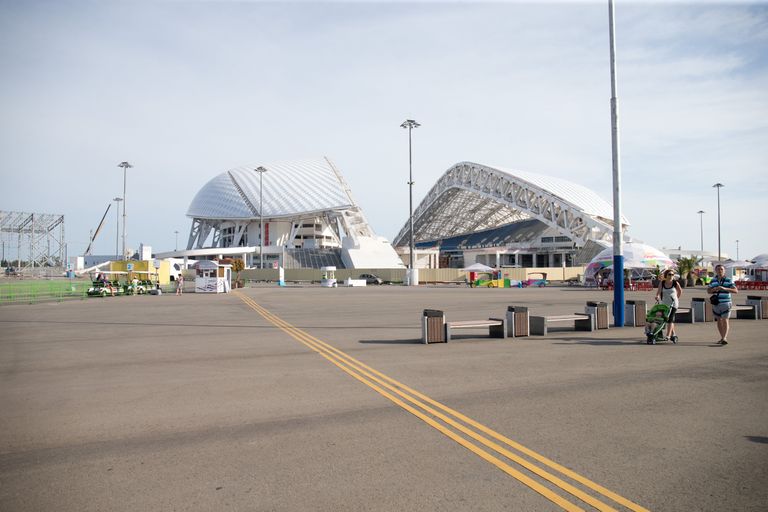
Following the Olympic «perestroika», the Estonians at Punase Lageda gave up farming and went into tourism business. Currently, they rent out their houses for holiday-makers and private households need to compete with hotels. Dianna Gubareva is honest: «If you come to us, it’s cheaper.»
Men middle-aged and older are making a living, servicing people at the ski lifts and tracks. Some have even been through training in France, acquiring experience with ski lift. The Estonian youth works on snow tractors – special machines able to move on the steep slopes. In winter time, these are used to press the snow tight to be fit for skiing. «The work pays off quite good for the boys, as the mountains take skills and guts. The mountains will have no mercy with sloppiness,» says Ms Gubareva.
It is always by waves that new people have moved to settled down in Eesti Aiake. In the middle of 20th century, the area was famed for its beekeeping. «It is here they bred the Caucasian honey bee which was sold to all of the Soviet Union and even exported abroad,» relates Ms Gubareva.
In the 1950ies and 1960ies, the Punase Lageda Apiary in Eesti Aiake, operating under Academy of Sciences of the USSR, built houses at Pereselencheskaya to attract new workers. Thus, lots of beekeepers moved to the Estonian village from Kuban, with their families.
This is commonly called the second wave of migration. The first was when the Estonians came.
The third wave came with the Olympics, in 2014. First came the builders, then the volunteers, and then those «waiting in line»: policemen, doctors, and teachers who live in the former five-storey volunteers’ houses behind Tammsaare Museum. Thus, the 800 flats now vacant have now begun to register the new locals of the Estonian village, and the place has become much more populous.
Like Dubai or Cyprus
Till today, tourists are arriving to see Russia’s Southern capital and its Olympic venues with their own eyes.
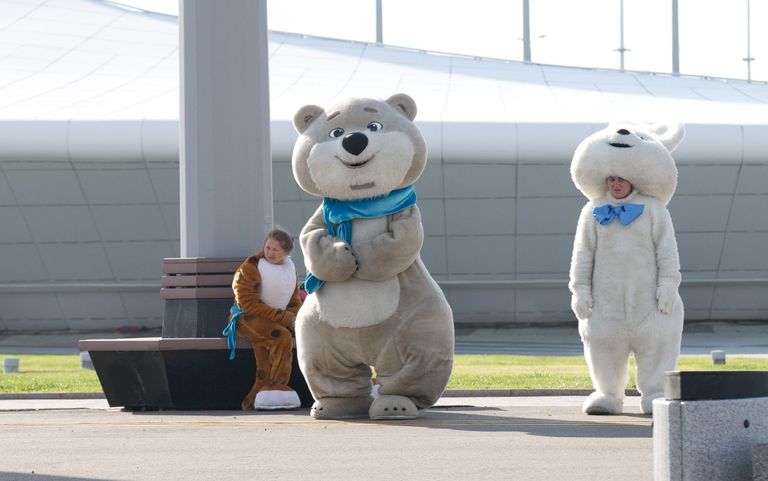
Irina, a young tourist from Volgograd Oblast, declares: «Isolation of Russia by the Western nations will not affect the development of Sochi, it is nearing European service standards, and the tourism is highly developed. We swapped emirates (United Arab Emirates – edit) and Cyprus for Sochi and are enjoying it. Russia has one big problem: we have such a vast land and it is difficult to keep it in order. And we are proud because now everything here is becoming clean and beautiful. This is unique, the mountains with summer and winter side by side. As for the top notch Western service and entertainment, we can easily replace it with the unique nature and atmosphere.»
Unlike lots of other Russian tourists, Irina does not shy away from speaking her mind regarding the sanctions imposed by the West: «I believe the sanctions do not touch the lives of ordinary people. But, sadly, they do affect the economic and political situation in the nation. Main thing that there’d be no war. I think the political leaders of the nations should agree between one another and make peace.»
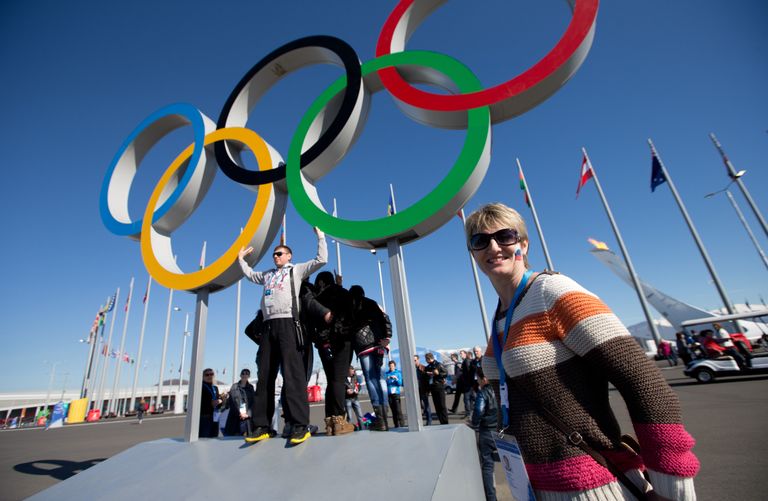
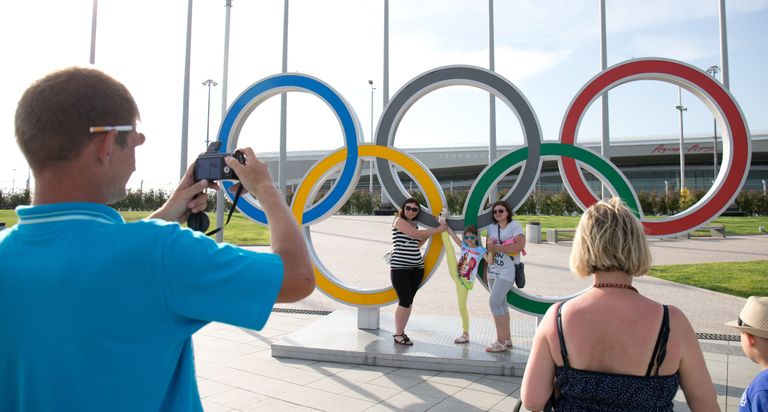
* Lit. Red Glade
* Lit. Little Estonian Garden